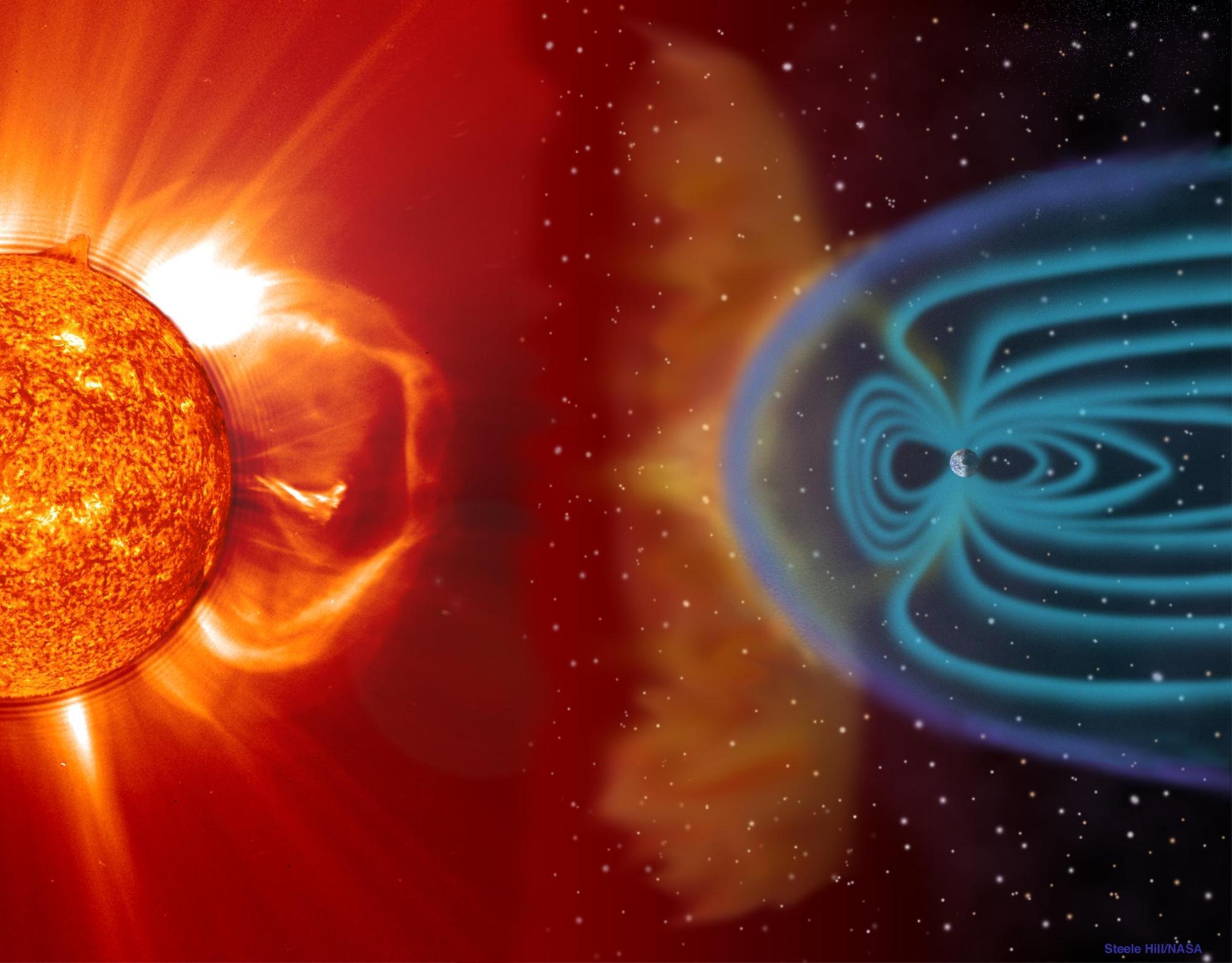On other pages we look at various solar phenomena, here, let's think about the effects on our daily lives.
Space Weather Forecast
Explosions called flares occur on the Sun. When solar flares occur, the Sun emits X-rays and charged particles which sometimes reach the Earth. However, the Earth has an atmosphere and a magnetic field, so they do not reach the Earth's surface. But, some things and people are affected, such as artificial satellites and the astronauts traveling around the Earth; and jet aircraft crew members flying in the stratosphere, where the air is thin. Also, when the Earth's magnetic field is disturbed by charged particles, a current is induced in ground based electrical power transmission lines. This can damage power facilities and cause power outages. Such environmental changes in the space surrounding the Earth are called "space weather," and predicting them is called "space weather forecast." Current space weather forecasts are based on the time delay until charged particles reach the Earth after a flare is observed in X-rays. This forecast can prevent the damage from charged particles, but it cannot prevent the damage from X-rays.
If you can predict the flares themselves, damage caused by X-rays can also be prevented. At the present, the success rate of flare forecasts 1 day in advance is about half. We forecast them based on empirical criteria using proxies, such as the shapes and sizes of the sunspots.
The Hinode Solar Optical Telescope enables precise photospheric magnetic field measurements. Comparing the observations and theoretical models has made it possible to investigate in detail the magnetic structure which causes flares. As a result, this has shown that the characteristic fine magnetic structures were the triggers to cause the flares. By connecting the detailed observations and theoretical model simulations, we believe that there will be a way to predict flare occurrences based on physical consideration of the observations.

©Steel Hill/NASA
Long Term Effects on the Global Climate
On the other hand, how does solar activity affect the global climate in the long term? These days, many people might have heard the story about "solar activities have declined so the Earth will become cooler." An indicator of solar activity is the sunspot number. The more sunspots there are, the higher solar activity is. We don't know about the causal relation between the sunspot number and the temperature of the Earth for certain, but from past data we can see a correlation that when the sunspot number decreases, the Earth's temperature also decreases. The sunspot number increases and decreases in a cycle of about 11 years. From 2014 to 2015, it was the period of maximum solar activity, but in fact, compared to the previous solar maximum, the sunspot number was actually quite small. Also, in the last solar minimum (around 2008 to 2009), there were 266 days with no sunspots appearing on the solar surface in 2008, and 261 days in 2009. These are more than 70 percent of the year. In addition the solar minimum lasted a longer time than usual. As a result, the length of the last solar activity cycle (from one solar minimum to the next) has been extended to 12 and a half years, much longer than the average. Looking at these solar activity characteristics, some people say that global cooling will occur. We will keep watching the solar activity carefully.

The Frozen Thames (1677)
